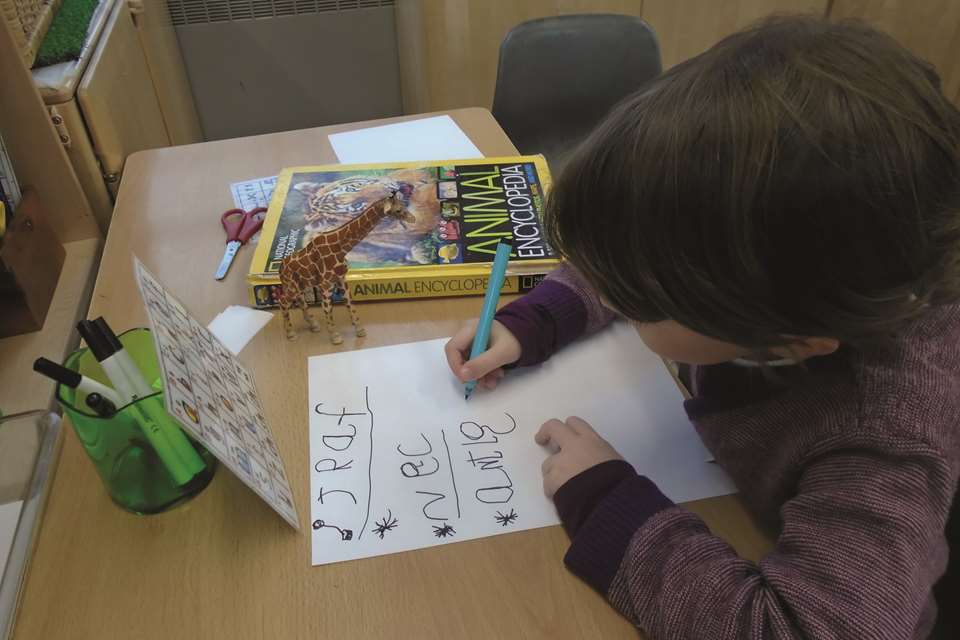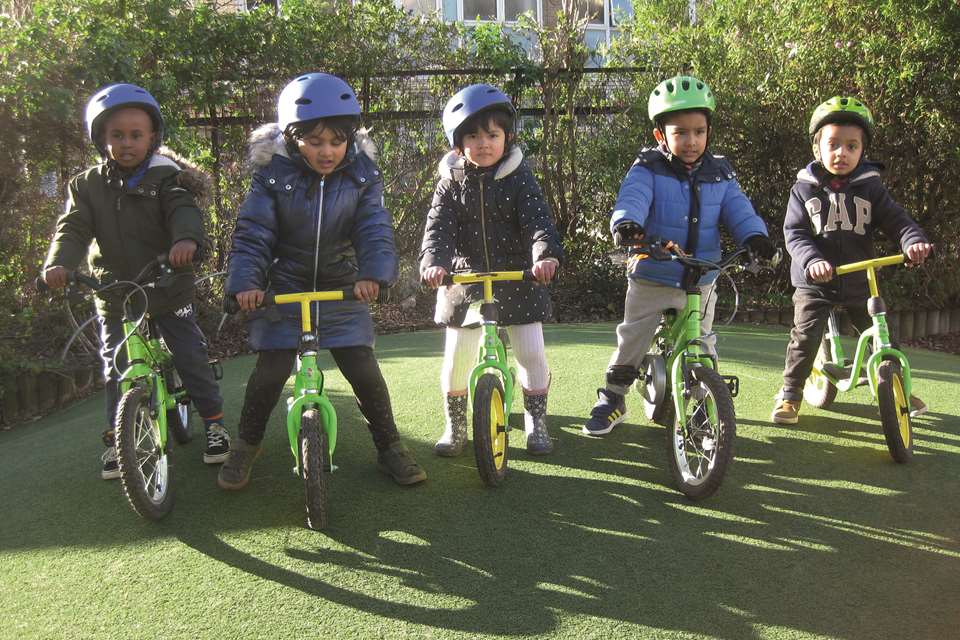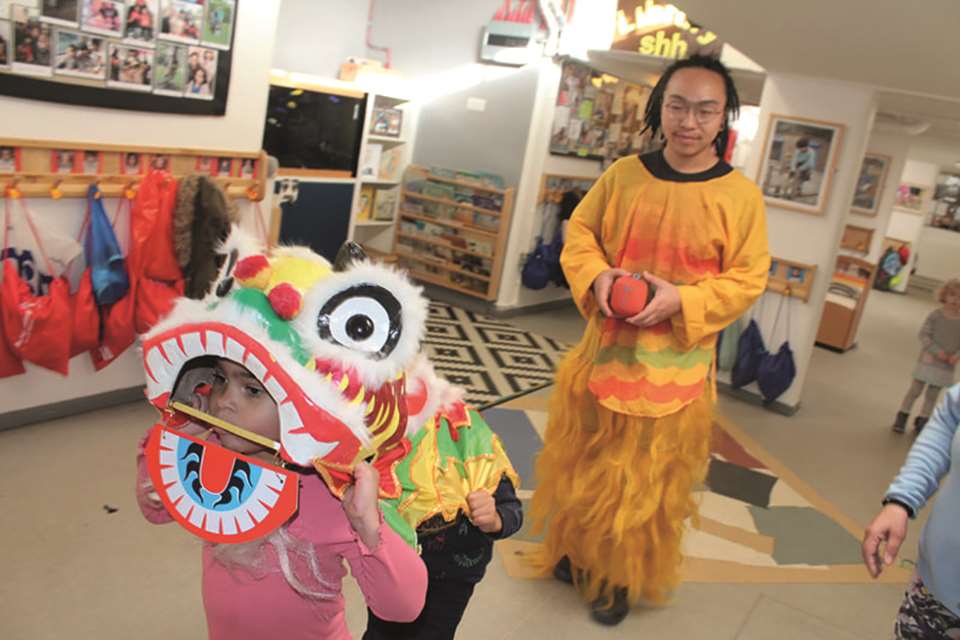EYFS Activities – An A to Z of learning – F is for… friends, fireworks & frogs
Rachel Keeling Nursery School
Tuesday, September 1, 2020
The team at Rachel Keeling Nursery School explain how they encourage friendships, celebrate festivals such as Bonfire Night, and embrace unexpected learning opportunities
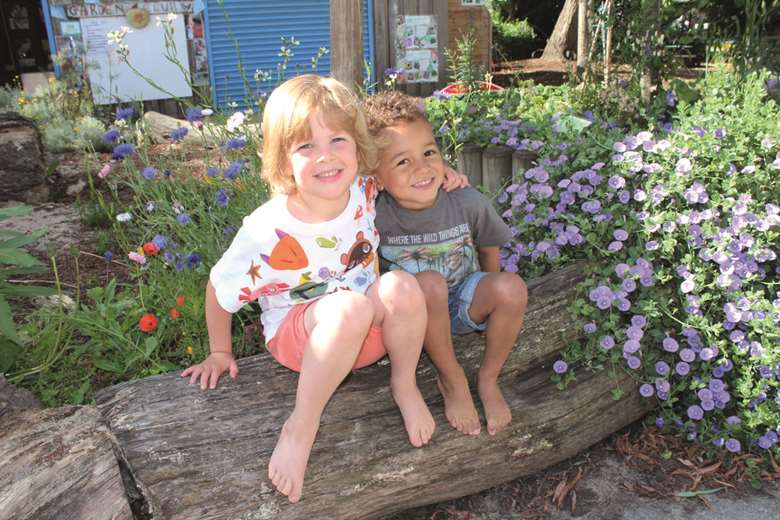
BEST OF FRIENDS
At Rachel Keeling Nursery School, we understand the importance of attachment for young children and work hard to support our children and families to feel loved and part of our school community. Relationships and friendships are at the heart of this.
Measuring children’s well-being and engagement is a vital indicator of how much progress they will make, and all the team are experienced in using the Leuven Scales to do this. We monitor the children termly (sometimes more if needed), discuss the findings as a team and plan for children’s needs. Often if a child scores at the lower end of the scale, it will correlate to their relationships with peers.
To help them build friendships, we invite them to small-group experiences, such as playdough (where children may work in pairs to create batches of dough), physical games in the garden, such as hide and seek, and chasing games (which often involve lots of shrieking!).
We will always observe the child to find out what they enjoy and perhaps which other children may be a good match to help them start building friendships. They may be encouraged to do special jobs, such as feeding the fish together or taking a message to the office.
Once children start making friendships, parents tend to as well, and we recognise the importance of these friendships too.
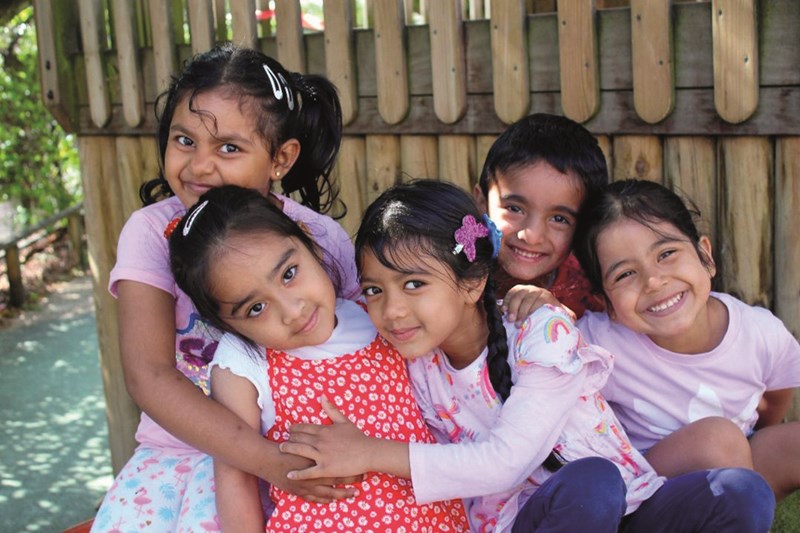
WITH A BANG
We celebrate festivals throughout the year, and Bonfire Night is one tradition we mark.
As we are a large setting, whole-group events are rare, as they can involve children waiting when they could be learning. But there’s much excitement when they do happen!
Our fireworks display is a favourite, and to minimise risk, we:
- seat the children at one end of our very large garden, far from the fireworks
- bury the fireworks deep in the sand to avoid them tipping
- ensure there are no overhanging branches or obstructions
- always have sand and water nearby to douse used fireworks.
- To make the event as enjoyable as possible for the children, we:
- use family fireworks, which are very quiet and have minimal effect on the environment
- celebrate after the large, local displays, so that many children have an experience of what fireworks look and sound like. Many of our children live in flats and have bird’s eye views of the fireworks across London
- give children the option to watch from a window if they don’t want to go outside.
As we set the fireworks off during the day, the display is not dazzling. But the excitement is palpable, and the children’s faces are full of awe and wonder. Their memories of the display last throughout their time at nursery and the fireworks photographs in their Special Books are some of the most talked about.
IT’S A FROG!
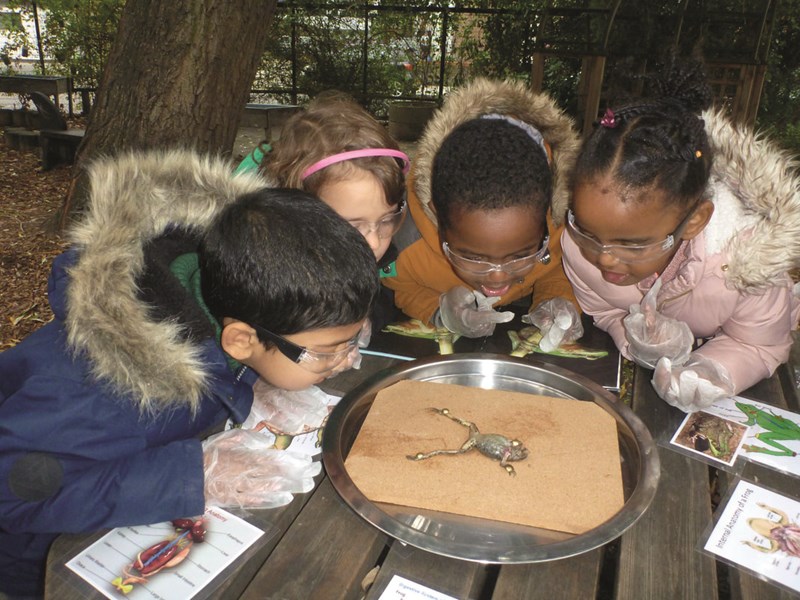
We never pass up a learning opportunity, so when the children discovered a dead frog behind our compost area, staff helped the children investigate further.
Once it was ascertained the frog was dead (and not hibernating), we thought about how to create a rich and challenging learning opportunity, and decided to dissect the frog with children.
The frog was frozen overnight to halt further decomposition and the staff researched the dissection process, thought about safety issues and assembled the necessary resources – dissection trays, pins, scalpel, paper towels, goggles, hot water and information books.
With adult support, the children then observed the frog. Some noticed its powerful hind legs for jumping, some commented on its colour and spotted skin to provide camouflage, while others predicted what they might find inside it.
An adult cut through the skin and muscle underneath with a scalpel. Children looked into the body cavity and discovered some of the organs. Their awe and wonder were evident. We also found tiny black eggs, which established it was a female frog.
Afterwards, we buried the frog and supported the children to understand the cycle of life. The children took home information about what they had learned to share with their families, and staff reflected on the experience. The children truly had been scientists at work.
Rachel Keeling Nursery School is an Outstanding setting in Bethnal Green, east London
Download Now

